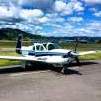Blow by and oil use
-
Members Online
- alextstone
- Will.iam
- Crawfish
- PT20J
- Ibra
- sandeepdutta
- AndreiC
- kortopates
- dkkim73
- Marc_B
- Aaviationist
- Fly Boomer
- IvanP
- MB65E
- MDMooney
- JoeA
- Abe Frowman
- Rwsavory
- mooney_flyer
- Immelman
- jetdriven
- N177MC
- 00-Negative
- A64Pilot
- Steve Dawson
- Zulee
- Schllc
- Ivan
- Buckster
- Tommooney
- gdwinc
- ohdub
- IFLYIFR
- TCC
- Mcstealth


Recommended Posts
Join the conversation
You can post now and register later. If you have an account, sign in now to post with your account.